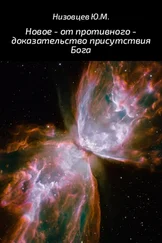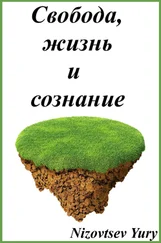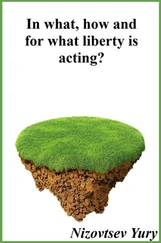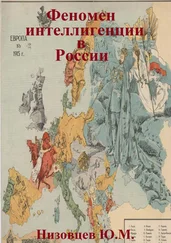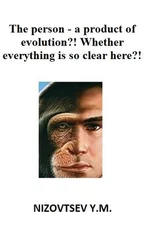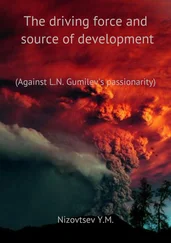Юрий Низовцев - Everything and nothingness
Здесь есть возможность читать онлайн «Юрий Низовцев - Everything and nothingness» — ознакомительный отрывок электронной книги совершенно бесплатно, а после прочтения отрывка купить полную версию. В некоторых случаях можно слушать аудио, скачать через торрент в формате fb2 и присутствует краткое содержание. Издательство: Array SelfPub.ru, Жанр: Философия, История, История, История, beginning_authors, Философия, Биология, Химия, Математика, Физика, Религиозная литература, Религиозная литература, на русском языке. Описание произведения, (предисловие) а так же отзывы посетителей доступны на портале библиотеки ЛибКат.
- Название:Everything and nothingness
- Автор:
- Издательство:Array SelfPub.ru
- Жанр:
- Год:неизвестен
- ISBN:нет данных
- Рейтинг книги:5 / 5. Голосов: 1
-
Избранное:Добавить в избранное
- Отзывы:
-
Ваша оценка:
- 100
- 1
- 2
- 3
- 4
- 5
Everything and nothingness: краткое содержание, описание и аннотация
Предлагаем к чтению аннотацию, описание, краткое содержание или предисловие (зависит от того, что написал сам автор книги «Everything and nothingness»). Если вы не нашли необходимую информацию о книге — напишите в комментариях, мы постараемся отыскать её.
Everything and nothingness — читать онлайн ознакомительный отрывок
Ниже представлен текст книги, разбитый по страницам. Система сохранения места последней прочитанной страницы, позволяет с удобством читать онлайн бесплатно книгу «Everything and nothingness», без необходимости каждый раз заново искать на чём Вы остановились. Поставьте закладку, и сможете в любой момент перейти на страницу, на которой закончили чтение.
Интервал:
Закладка:
Particles-copies of the active, or particles-copies of consciousness, thus, "receive" out of the infinite the copies of things (the passive), which are required for "replacement" (update) by them of previous copies of things in the holographic projection. The things themselves remain in infinite Uniform in a conjoint state as and consciousness, and along with that by means of copies of particles of consciousness are manifested as a result in the form of the environment surrounding particles of consciousness as if outside and from within. That is in the manifested reality the "objects" from Uniform don't appear as such, but they are present nevertheless at this reality in the form of copies which are being updated.
Itself holographic picture of allб that are manifested in timeб can't but be the material. By definition, this picture contains the frequency formations. Itself multiple copies of single consciousness, which possess self-consciousness, have one frequency structure, the living beings without self-consciousness have other frequency spectrum, and things from Uniform, identified by particles of consciousness, are formed by consciousness in the form of information copies of things as the simplest frequency structures which are qualified as lifeless matter and which make the real worlds. At this, in the sum this undulating holographic structure has to be in antiphase, i.e. it is equal to zero.
Interestingly, this process falls under the Hegelian triad, inasmuch the thesis in the form of eternal and infinite Uniform passes into the antithesis in the form of the finite in the infinite update (projection of Uniform), i.e. in time, coming to the end as the synthesis in formation of equilibrium unity of the temporary, the finite in infinity and the infinite, the eternal, the motionless that holds all system in existence in spite of the fact that on material balance this system as if also isn't present.
A holographic projection, formed by consciousness, has no motion, but, as it is paradoxical, it is changing, more precisely, updated sequentially picture, owing to indissoluble communication of consciousness in the projection in own multiple-single expression with timeless Uniformб in which everything is merged together, but it can be "allocated" in the form of motionless copies every "moment" (position) of updating.
Consciousness gets opportunity of life in sequences of these updates of the projection, opportunity to change, at this eternal infinite Uniform "goes", thereby, in real beingness, as if coming to life in time and along with that, retaining itself from falling in non-existence in which can occur nothing.
Thus, there is no motion in eternal and infinite Uniform – and that is understandable for the timeless, there is no motion and in a holographic projection of Uniform, – and that too is understandable: consciousness no need to move copies of things from Uniform – it is enough only to update them in information process of identification in irreversible sequence on the basis of Uniform, in which the single consciousness has an access, as if browsing it, on what paid attention to Fichte in due time: “I consider some not-I, and it thus isn't inherent anything more, except contemplation. It believes itself in contemplation, as such, quite apart from not-I; it contemplates on one's own initiative without the self-slightest enforcement from outside… it believes them as a display of something outside of its being. – In this outside available aught displayed characteristics must be indeed, not by virtue of their disposition in the minds, and utterly regardless from I. according to their own, in the most thing reasonable laws. No-I do not generates contemplation in I, I do not begets nature not-I, but both must be completely independent of each other; and yet between them there must be a profound harmony” [18, p. 301].
Ratio of consciousness and of the passive from Uniform, which is similar to presented Fichte, can only be realized in the holographic picture that is formed by the single consciousness on the basis of the passive from timeless Uniform.
Only in this case form-building abilities of consciousness can find to themselves application what in a certain degree there corresponds also Fichte's thesis: “"… I oneself is for myself the object whose properties under known conditions only depend on thought, but whose being must always be assumed" [18, p. 380].
Therefore disembodied spirit don't need as the producing cause of motion, but without corporeal consciousness (the active), as it turns out, can't go, inasmuch without him there is nobody to carry out the update procedure, forming time, and hence, ultimately, events.
Essence of consciousness is the problem for many thinkers: that it is – aught the material or the ideal?
For example, Descartes has attributed consciousness to substance: “53. Each substance has one principal attribute; (1) for mind it is the attribute of thought, (2) for body it is extension” [19, p. 13].
And he is right, if his words attributed to consciousness in a holographic projection.
Unlike Descartes, Husserl did not consider consciousness as substance. He believed that consciousness is not a thing, that it is not part of the world, but constituting the world the synthetic spontaneity of intentional acts of physical or mental nature: consciousness is an area of essential (a priori) relations and essential options: “Conscious intentional relation I to his subjects I cannot understand differently, as what phenomenological aggregate composition of the unity of consciousness belong to just such intentional feelings, where the intentional object is I, as the animated body, I – as a spiritual person and, thus, the entire empirical I-subject (I-person). Such intentional feelings should make simultaneously the essential phenomenological core of the phenomenal I" [20, p. 303].
Thereby Husserl tries to exclude consciousness from system of the causal relations, which things of the world – the physical or the mental – are subordinated.
And here Husserl is right in a certain degree, inasmuch itself consciousness and, as it seems, without any pressure, forms copies of things from Uniform in the form of representing so, as it can identify them in accordance with available at him at the moment and at this level of development the understanding: itself single consciousness can delve into this representing (the being) in the sequel already as the individual consciousness. Thereby itself single in plurality consciousness establishes an order of things.
However consciousness immediately falls under the order, which it itself has set. The situation is saved from bad infinity thanks to the fact what single consciousness "works" with a finite and can begin its work again, as and any individual consciousness can attempt to correct deeds in the subsequent lives.
Thus, consciousness as united and as each individual consciousness and drops out of an order, and along with that follows it. Consciousness itself (for own development) "concludes" itself in a framework of an order, necessity, but, only to overcome this order, to be exempted from it: exactly in this is manifested liberty of consciousness in its highest expression. Consciousness is always aspiring somewhere and always "dissatisfied" as a reality, and with itself.
Whatever it was, the essence of consciousness in each of its highest individual expression, as opposed to things, did not allow him to be in the "channel" of this order, and opposite, requires destructing it in search of oneself in other entities, that comes from a permanent dissatisfaction of consciousness with itself, or liberty.
It is possible to agree with Husserl, that consciousness not a thing in the sense of a passive object, inasmuch it itself forms copies of things on replacement, more precisely, for updating previous copies. But, nevertheless, consciousness can't be incorporeal in a holographic projection, i.e. completely by objectless.
Читать дальшеИнтервал:
Закладка:
Похожие книги на «Everything and nothingness»
Представляем Вашему вниманию похожие книги на «Everything and nothingness» списком для выбора. Мы отобрали схожую по названию и смыслу литературу в надежде предоставить читателям больше вариантов отыскать новые, интересные, ещё непрочитанные произведения.
Обсуждение, отзывы о книге «Everything and nothingness» и просто собственные мнения читателей. Оставьте ваши комментарии, напишите, что Вы думаете о произведении, его смысле или главных героях. Укажите что конкретно понравилось, а что нет, и почему Вы так считаете.

